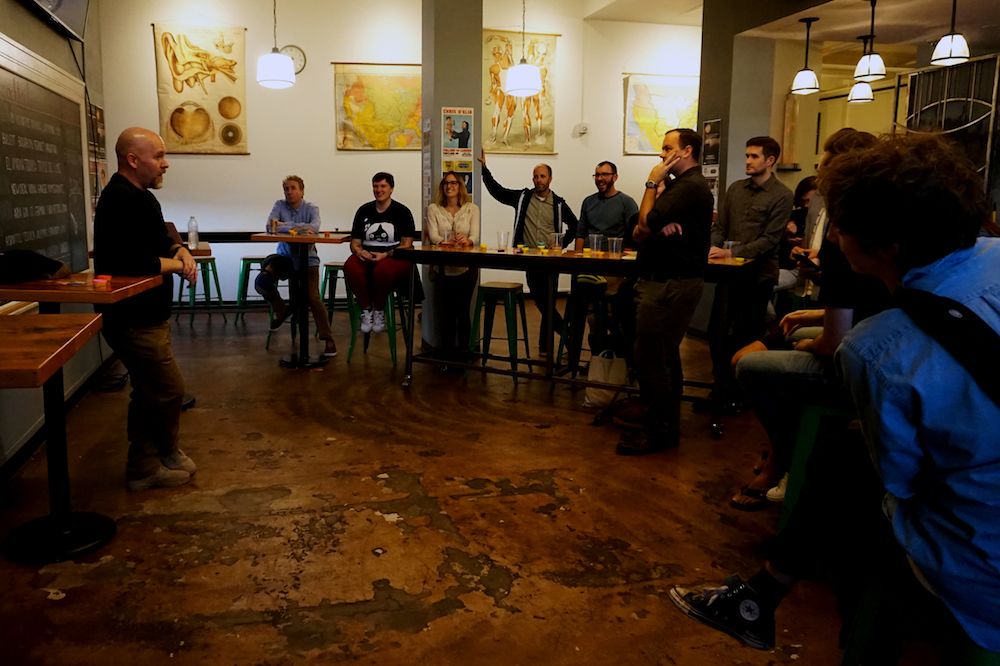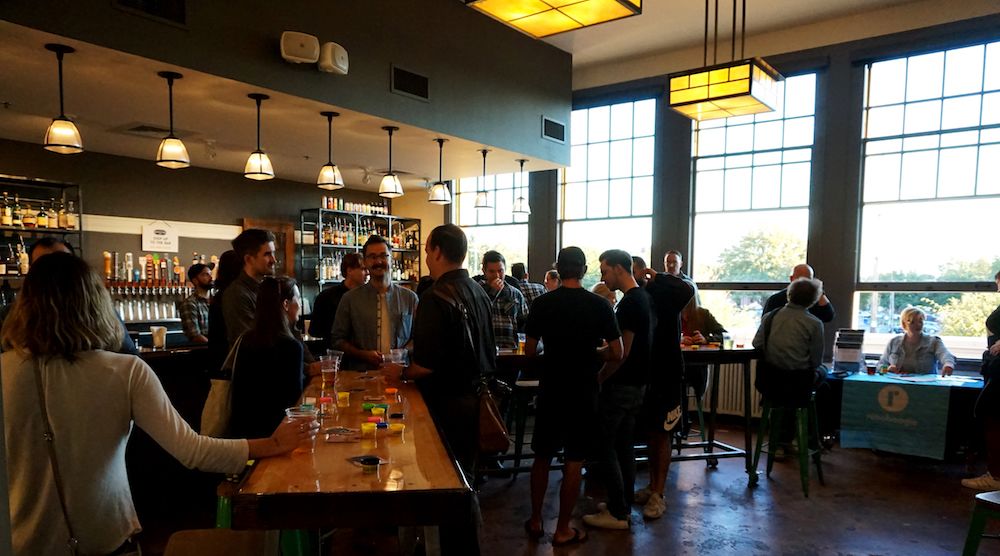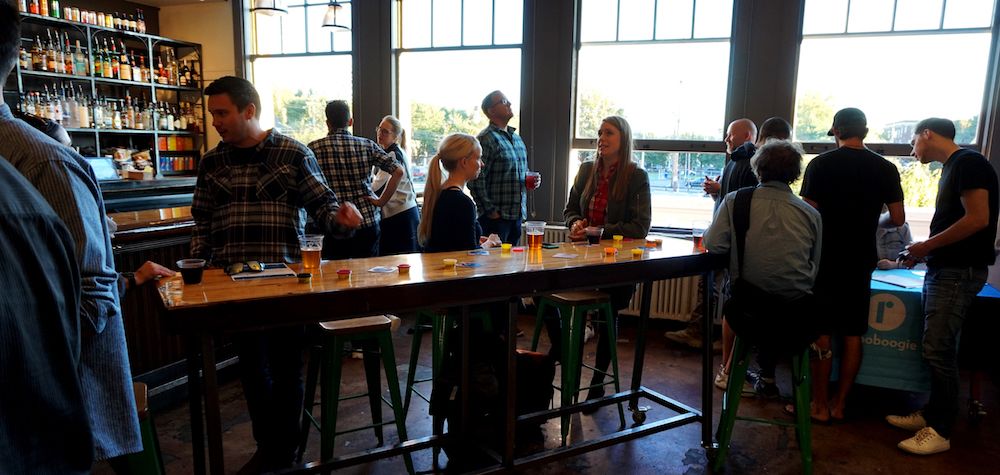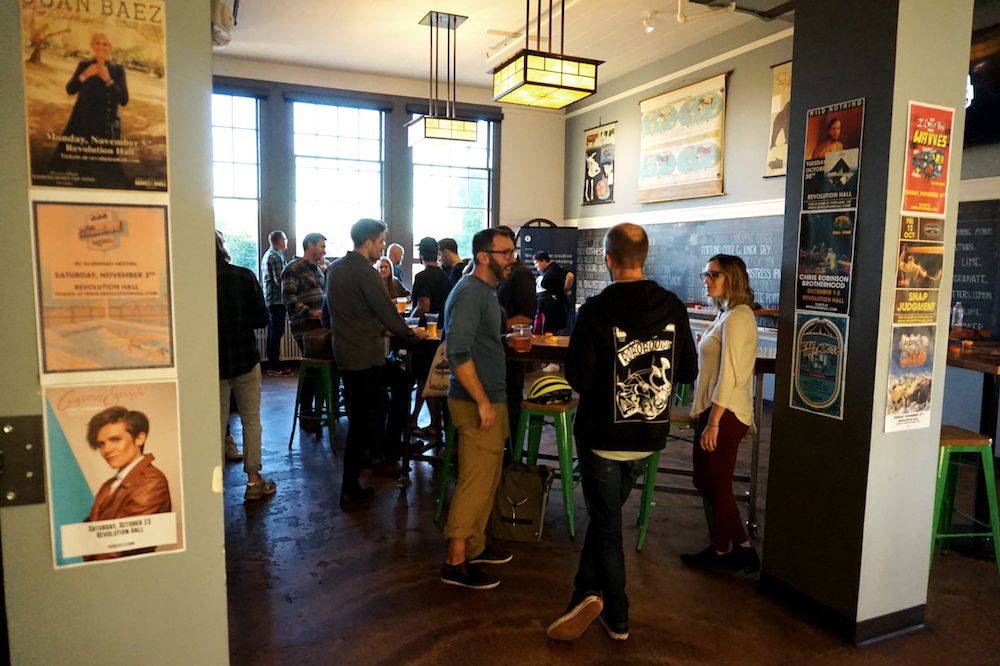Go Back
This month, Camp Optimization returned to host Bill Levy, Program Manager at PeaceHealth. The event was all about the importance of user experience as a part of the design process across disciplines. Bill’s talk was riddled with fun facts about his experience, actionable takeaways, and of course, Play-Doh – don’t worry, I’ll get to that later. Drowning in your sorrows of missing this event? Understandable. Luckily we’re here to recap our top takeaways from October’s Camp Optimization.
Meet Bill
As Program Manager at PeaceHealth, Bill wears many hats. But not nearly as many hats as he’s worn throughout his work history. Bill has a colorful resume that spans from fine art to firearms. Throughout his career, Bill has worked as an Emergency Medical Technician, Police Officer, Photographer, Firearm Training Counselor, Web Designer, and User Experience Director. Whew! Needless to say, Bill came with a ton of great stories and interesting perspective on this topic and how it relates to a wide array of disciplines.
User Experience
So what exactly is “user experience?” In short, it’s a lot of things. Ultimately, crafting an effective user experience boils down to understanding your users and their motivations, and addressing those in your final product; whether that’s a website, a T-shirt, a restaurant, an app – you name it. Regardless of the industry, the most impactful way to communicate, and subsequently nurture a relationship, with your users is to know who they are and to speak directly to them. So when we say “user experience,” this can refer to a number of methods for understanding an audience: affinity mapping, focus groups, multivariate testing, persona creation, prototyping, wireframing… (the list goes on, trust me).
By investing in these practices, an organization no longer needs to rely on assumptions or gut instincts about who’s buying what they’re selling. But understanding the value of UX is the easy part. Here’s the hard part: selling the process into your organization. We’ve all heard it before: “We know our users,” “We already have a process,” “We don’t have the time or budget for that.” Getting organizational buy-in for new methodologies can be tricky, but fear not: Bill has come to save the day.
The Selling Strategy
While it’s common for the introduction of new processes to be met with resistance, that doesn’t mean the fight isn’t worth it. Bill shared a few tips to help sell user experience in a “go, go, go” design culture.
1. Learn
Set yourself up for success. The best way to get started in fostering adoption of a new framework is to read up on the past and present. Make sure you are fully oriented into the way things are working currently and educate yourself on current processes. Don’t forget outside sources, too. Look to books or blogs or anything you’re interested in to help make yourself great at analyzing data. When you’re comfortable with the “now,” find time to meet with your team, department, or supervisor to share your vision. Meet with other people too! Attend meetups and events to help strengthen your understanding and your offering. Then, practice. Practice your craft and be confident in the ideology you are proposing. While you are practicing, go ahead and fail a few times. At roboboogie, we fully agree with Bill: failures are learning experiences. Learn what works and what doesn’t work, and always view experimentation as an opportunity.
2. Make friends
Once you have a firm grasp on things, meet as many people as you can and learn about their experience in the existing system. Talk to project sponsors, designers, developers, analysts, marketers… The more friends you make, the more support you have across the board. On top of making friends, make sure you’re getting people engaged. Here’s where the Play-Doh comes in (yes, he actually provided the audience with Play-Doh). While it may seem silly, something as simple as Play-Doh can get the gears turning, and spark conversations and ideas that normally might not see the light of day. Toys or games inspire creativity and help to get people thinking. Do what you can to find like-minded people and get everyone on the same page.
3. Appeal to the culture
It’s always harder to sell UX on the inside. Bringing in an expert from the outside always has more value, since they are not as close to the task at hand. Here’s where your agency partners shine. Work with a partner you trust to help gain traction with higher-ups. With that, remember to learn the lingo. What one organization calls personas, others may call user journeys The most important thing is to just do it. Create personas based on your users and use them from start to finish; you’ll see the light go on. If you make it, people will get it.
4. Ask for forgiveness
Sometimes, the best thing you can do is to go for it. Take control and show what user experience can do for your company. Once the work is done, it’s hard to argue with the results. This can be as simple as sketching on a piece of paper at your desk, a napkin at the coffee shop, or even on a window (Bill cautions against using Sharpies on windows). As long as you’ve done your due diligence up front, you should feel confident in taking a leap to demonstrate the importance of UX.
5. Low-hanging Fruit
While everything should focus on user-centric design, you can still gain insights by collaborating with your internal team.. Consider starting with a simple survey or a test at lunch with colleagues. Once your confidence is built or you gain the trust of a superior, gradually work your way up to more in-depth practices. And keep making friends – they’ll want to get involved.
6. Measure
The best thing you can do when trying to sell in the user experience is to measure the results. Data should be your best friend; whether quantitative or qualitative, make a commitment to never design without data. Subjective design by committee can certainly put you in an interesting position. Remind key stakeholders about why their patience for real result will be rewarded, and always bring user-centric design principles to the table. Remember those personas? Keep your research and data at the forefront of your rationale and don’t be afraid to use it.
Thanks A Bill
Thanks so much for sharing your insights with us, Bill! Hangry for more Camp Optimization? Save the date for our inaugural event in 2019. Can’t wait to see you there!






